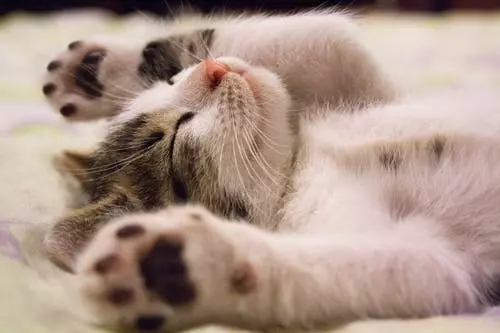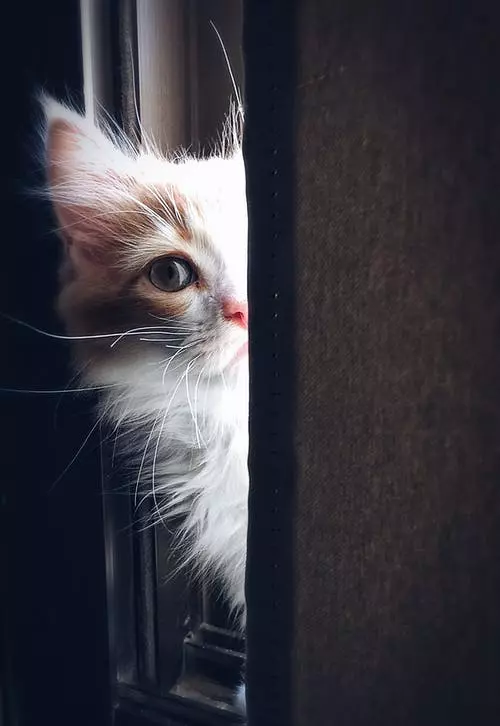Ear infections can be a common issue for cats, causing discomfort and pain. As a responsible cat owner, it is important to be able to recognize the symptoms of ear infections and take appropriate action to address them promptly. This article will discuss the signs of ear infections in cats, potential causes, treatment options, and provide answers to frequently asked questions.
Signs and Symptoms of Ear Infections in Cats:
1. Scratching or pawing at the ears: Cats with ear infections may exhibit obsessive scratching or pawing at their ears. They may also rub their heads against furniture or the floor in an attempt to relieve itching.
2. Discharge or foul odor: Ear infections often lead to the production of discharge, which can vary in color and consistency. A foul odor is a common sign of infection and should not be ignored.
3. Redness and swelling: Inflamed, red, or swollen ears are visible signs of an ear infection. Cats may also exhibit discomfort when you touch or examine their ears.
4. Excessive earwax buildup: An abnormal amount of earwax, accompanied by other symptoms, may indicate an infection. It is important not to forcefully remove the earwax yourself, as this can worsen the condition.
5. Loss of balance or head tilting: Ear infections can affect a cat’s balance, leading to unsteadiness or tilting of the head. If you notice these signs, it is crucial to seek veterinary attention.
Causes of Ear Infections in Cats:
1. Ear mites: Ear mites are a common cause of ear infections in cats. These tiny parasites can lead to intense itching and discomfort.
2. Allergies: Cats can develop allergies to various substances, such as pollen or certain foods. Allergic reactions can contribute to ear infections.
3. Foreign objects: Sometimes, foreign objects like grass seeds or small insects can enter a cat’s ear, leading to infection. Careful inspection and removal of any foreign objects are necessary.
4. Moisture or humidity: Moisture or excessive humidity can create an environment conducive to bacterial or yeast growth in a cat’s ears. Cats who spend time in water or have long hair around their ears are more susceptible.
Treatment Options for Ear Infections in Cats:
1. Veterinary examination: If you suspect your cat has an ear infection, it is crucial to consult a veterinarian for a proper diagnosis. The vet will examine the ears and may take a sample for microscopic analysis.
2. Medications: Depending on the diagnosis, your veterinarian may prescribe topical or oral medications to treat the infection. It is important to follow the prescribed dosage and duration strictly to ensure effective treatment.
3. Cleaning the ears: Your veterinarian may recommend cleaning your cat’s ears with a veterinarian-approved ear cleaner. It is important to follow their instructions and be gentle while cleaning to avoid further irritation.
FAQs about Ear Infections in Cats:
Q1: Can ear infections in cats be contagious to other pets?
A: Ear infections in cats are typically not contagious to other pets, as they are often caused by specific factors like ear mites or allergies. However, it is always best to consult with your veterinarian for clarification.
Q2: Can I use over-the-counter ear drops to treat my cat’s ear infection?
A: It is strongly advised against using over-the-counter medications without veterinary guidance. Some ear drops may contain ingredients that are harmful to cats or may not effectively treat the underlying cause of the infection.
Q3: Are there any preventive measures to avoid ear infections in cats?
A: Regular grooming, including cleaning your cat’s ears as recommended by your veterinarian, can help prevent the buildup of debris and moisture that can contribute to ear infections. Additionally, maintaining a clean living environment and ensuring your cat’s vaccinations are up to date can reduce the risk of certain infections.
Conclusion:
Being vigilant about your cat’s ear health is crucial for their overall well-being. By recognizing the signs of ear infections and seeking prompt veterinary attention, you can help alleviate your cat’s discomfort and prevent potential complications. Remember, always consult with your veterinarian for an accurate diagnosis and appropriate treatment plan.








